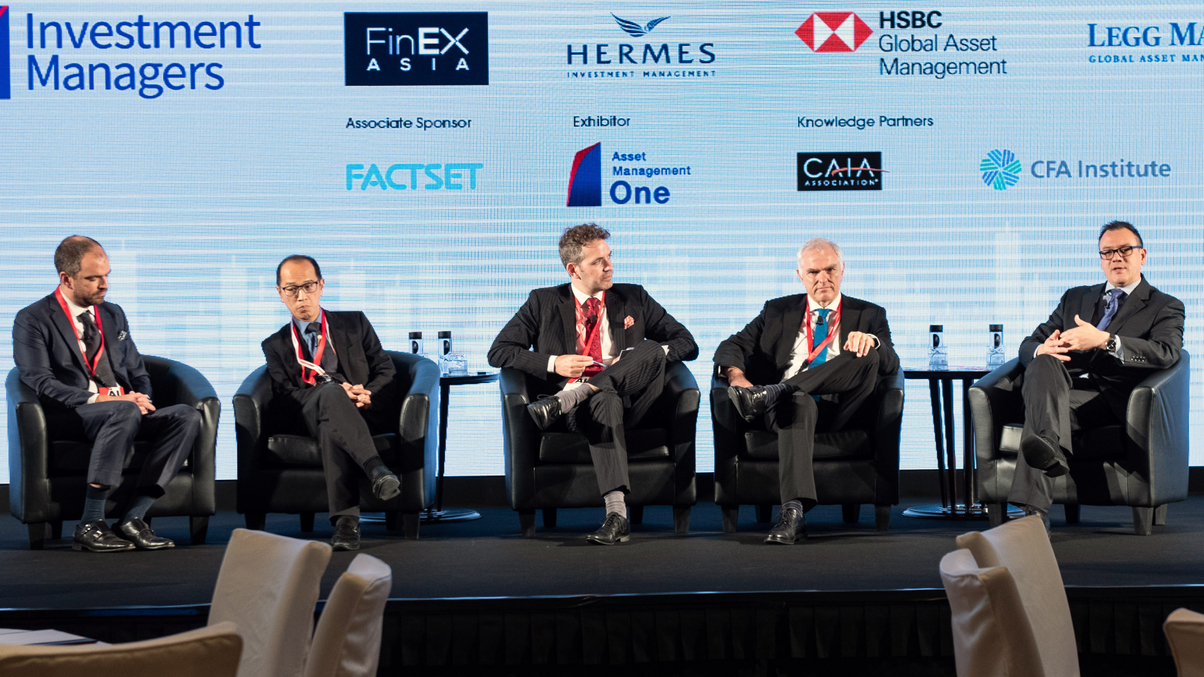How best to meet the challenge of quantitative tightening
Panelists at the Asian Investment Summit discuss the merits of outsourcing and new ways to construct robust portfolios, while Thailand's GPF reveals it is still adding to private assets.

The relative merits of in-sourcing or outsourcing asset management and how best to adapt to an unprecedented climate of quantitative tightening were among the key themes discussed on the first day of AsianInvestor's 13th Asian Investment Summit.
For Teerapong Ninvoraskul, head of private market investment at Thailand’s Government Pension Fund (GPF), which continues to want to lift its allocation to private markets, striking the right balance between managing money in-house or seeking outside help usually begins with some soul-searching.
“We have been learning and trying to be more realistic about what we can do, how we should approach each asset class," Teerapong told the audience, "[and] realistically what we can achieve and [under] what [circumstances] we could be better off outsourcing.”
It's a conversation many asset owners are having and part of a broader conversation that aims to get to grips with how all the different components of an investment strategy interlink.
Asset owners are trying to better understand the interactions between the internal and external management; they want to understand what kinds of bets external managers are taking and how some of them may correlate with the bets that they are making in an undesirable way, Matthew van der Weide, vice president for portfolio and quantitative analytics for Asia Pacific at Factset, said.
If asset owners are engaging in factor investing, they believe they can benefit from that on a longer horizon, and so they want to avoid external managers offsetting those bets, he said on the same panel discussion.
For Kristian Fok, the chief investment officer of Australia's Cbus Super, it is also important to make sure your in-house investment team have diversified backgrounds and skills, as well as a strong reporting framework.
But you can't easily cover all the bases in-house, so in the case of China Cbus has appointed fund managers to look at the market.
Fok said Cbus will have to do that because of the extra insight local market players have around the policy.
"I think it’s a difficult thing to do if you are not on the ground and you don’t have the right connections. It’s something that we’ll look at and [decide] how we exploit that progressively,” he said.
GPF will also have to outsource for investing into China given the domestic activities and the due diligence that has to be done in the local market, Teerapong said.
FROM QE TO QT
The panelists also talked about how asset owners are adjusting as a long period of quantitative easing gradually gives way to quantitative tightening, with the US Federal Reserve now slowly selling off the trillions of dollars of bonds it accumulated on its balance sheet to pump liquidity into the system and with other major central banks at some point set to follow suit.
There’re a number of strategies that the fund is looking at, including directly investing in a multitude of asset classes and introducing options, protection-type of strategies and liquid alternatives into the portfolio, Cbus's Fok said
The fund is currently managing new strategies in global equities. One of the advantages that provides is strong cash flows, which can help to cushion market corrections, he said.
When Garry Hawker, director of strategic research for growth markets at Mercer, was asked whether the investors he advised are looking at reassessing their traditional approaches due to the changing big picture, he emphasised that it takes time for new thinking to work its way through.
So although the consultant has been looking at the aspects around moving away from benchmark to more absolute-return strategies and multi-asset type of approaches, a lot of clients have issues such as measuring the investment performance, Hawker said.
GO PRIVATE
Another option as public markets become more challenging in the wake of quantitative tightening is to draw on the diversification benefits of more illiquid private investments, something pension funds are well suited to because of their relatively long-term horizons.
GPF, a long-time exponent of private asset investing, is likely to continue upping its allocations to private markets, Teerapong said.
“We are planning to get a little bit more exposure in this area (private market), he said, without specifying by how much. "We look at that as something that reduces the overall portfolio volatilities,” he said.
Sign in to read on!
Registered users get 2 free articles in 30 days.
Subscribers have full unlimited access to AsianInvestor
Not signed up? New users get 2 free articles per month, plus a 7-day unlimited free trial.
¬ Haymarket Media Limited. All rights reserved.


